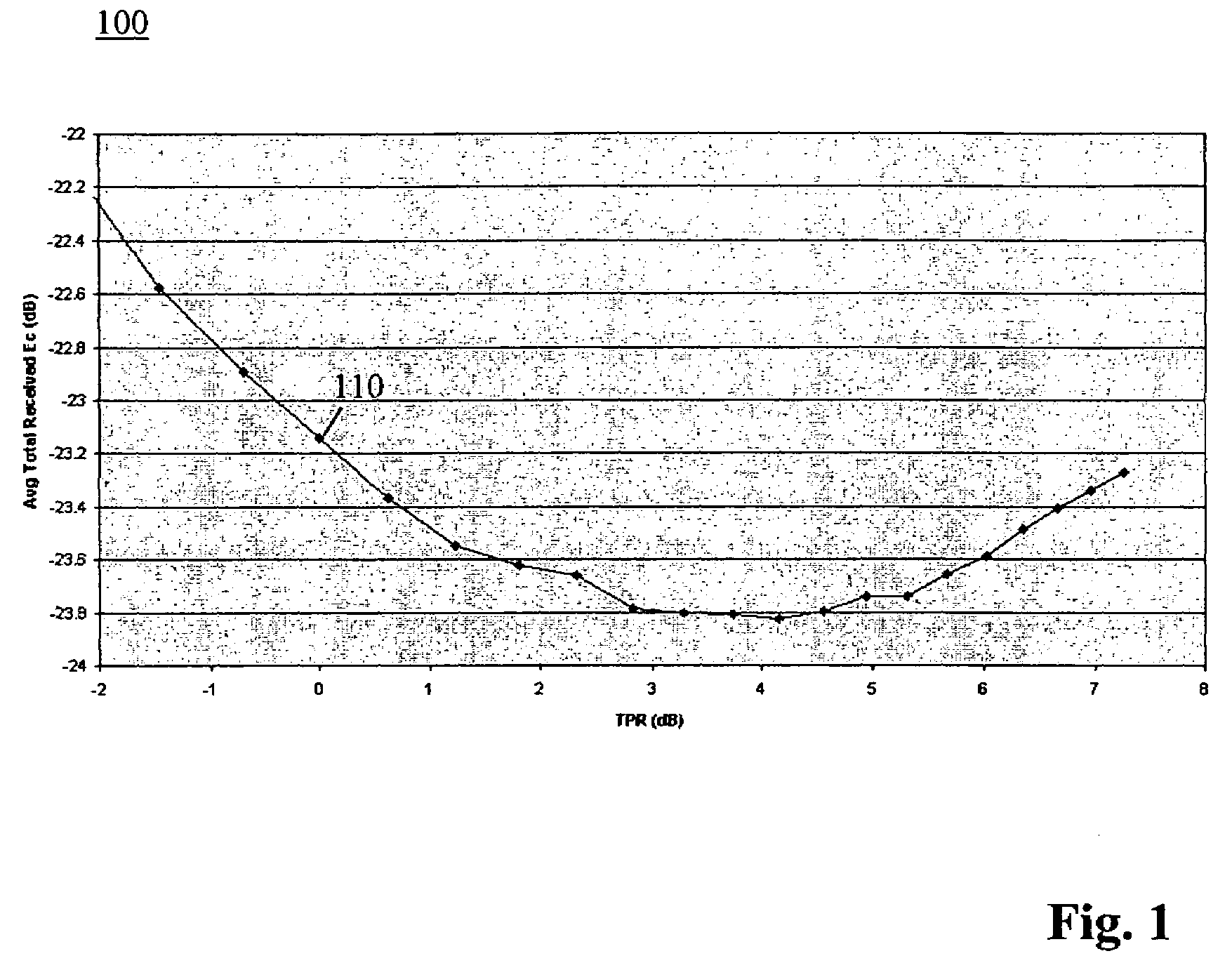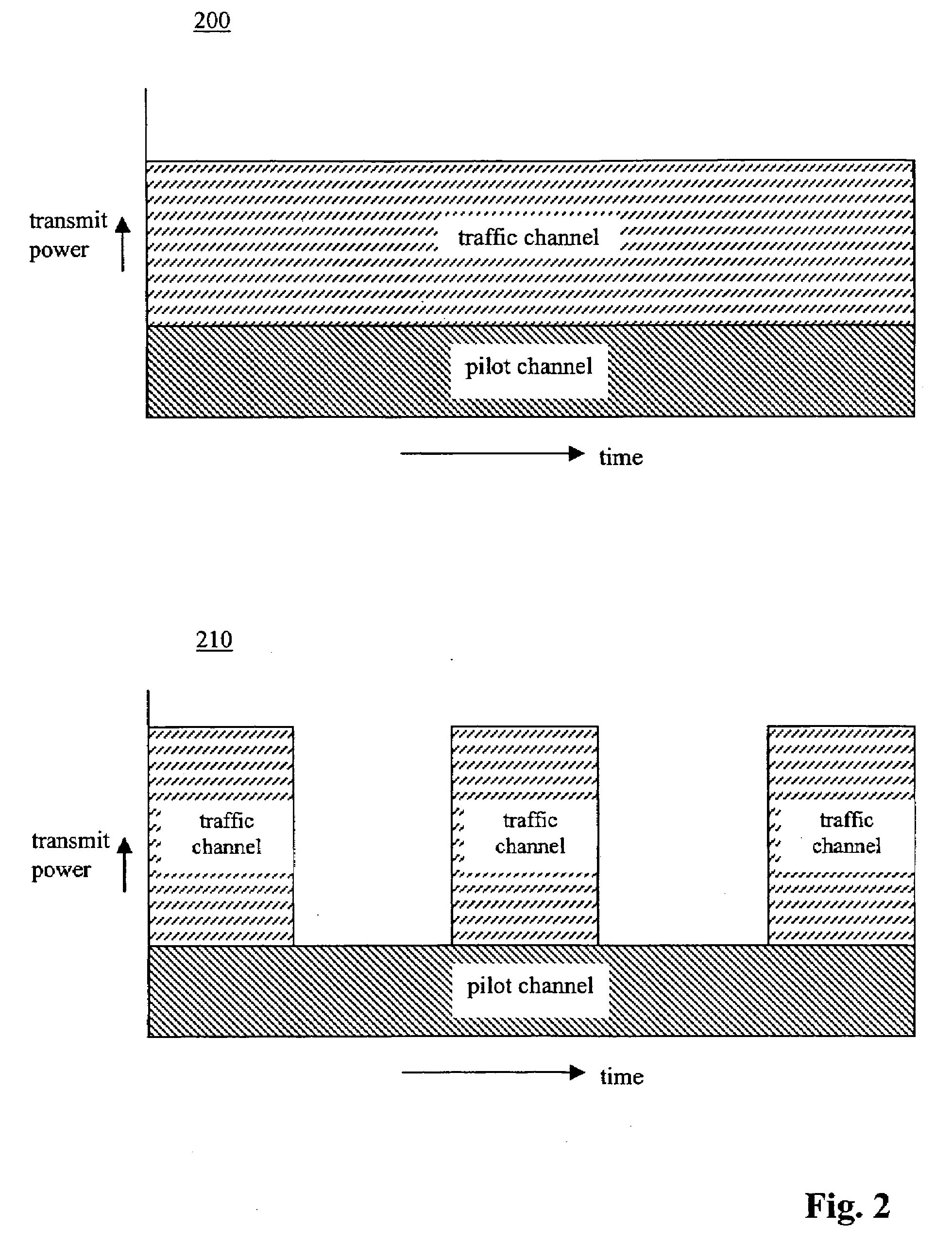Method for allocating transmit power in a wireless communication system
a wireless communication system and wireless communication technology, applied in power management, radio transmission, electrical equipment, etc., can solve the problem of lessening the effect of average total transmit power, achieve the effect of optimizing reverse link capacity, reducing pilot transmit power, and reducing average total transmit power
- Summary
- Abstract
- Description
- Claims
- Application Information
AI Technical Summary
Benefits of technology
Problems solved by technology
Method used
Image
Examples
Embodiment Construction
[0020]An embodiment of the present invention is a method of setting reverse link traffic and pilot transmit powers in a wireless communications system based on traffic channel activity in order to lower average total transmit power on the reverse link and optimize reverse link capacity. FIG. 3 depicts a wireless communication system 300 used in accordance with an embodiment of the present invention. Wireless communication system 300 can be, for example, a third generation (3G) wireless communication system based on Code Division Multiple Access (CDMA). Examples of such 3G systems include the well-known Universal Mobile Telecommunications System (UMTS) and CDMA2000 systems.
[0021]For illustration purposes, the present invention will be described herein with respect to voice applications in an UMTS system over a reverse link dedicated channel. It should be understood that the present invention may also be applicable to other types of applications, reverse or forward link shared channel...
PUM
 Login to View More
Login to View More Abstract
Description
Claims
Application Information
 Login to View More
Login to View More - R&D
- Intellectual Property
- Life Sciences
- Materials
- Tech Scout
- Unparalleled Data Quality
- Higher Quality Content
- 60% Fewer Hallucinations
Browse by: Latest US Patents, China's latest patents, Technical Efficacy Thesaurus, Application Domain, Technology Topic, Popular Technical Reports.
© 2025 PatSnap. All rights reserved.Legal|Privacy policy|Modern Slavery Act Transparency Statement|Sitemap|About US| Contact US: help@patsnap.com



